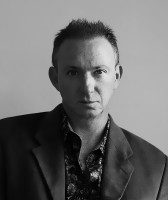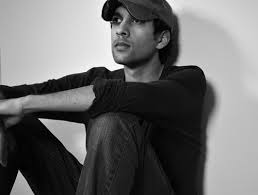 To imagine the year my reading journey began would indeed be a difficult feat. I would have to crawl back in memory all the way back to Where the Wild Things Are when what was more alluring were the pictures of oafish, horned monsters with sharp, pointy teeth and a little boy in a white wolf’s costume. Everyone has a first book, similar to a first love. For me, that was Where the Wild Things Are as it is what I most associate with childhood as much as GI Joe and Chutes and Ladders. It was the first book turning on the spring of my imagination. Brer Rabbit was another. My Grandfather used to read to my sister and I as kids. We used to howl with laughter at his acting shenanigans and overblown voice. That is the memory I have of him. He passed when I was five. Confusion over his death at that young age is a slippery memory I still have. A child’s lack of understanding—perhaps is why when, for the first time I saw television, the Lone Ranger was on and I cried when people got shot thinking it real.
To imagine the year my reading journey began would indeed be a difficult feat. I would have to crawl back in memory all the way back to Where the Wild Things Are when what was more alluring were the pictures of oafish, horned monsters with sharp, pointy teeth and a little boy in a white wolf’s costume. Everyone has a first book, similar to a first love. For me, that was Where the Wild Things Are as it is what I most associate with childhood as much as GI Joe and Chutes and Ladders. It was the first book turning on the spring of my imagination. Brer Rabbit was another. My Grandfather used to read to my sister and I as kids. We used to howl with laughter at his acting shenanigans and overblown voice. That is the memory I have of him. He passed when I was five. Confusion over his death at that young age is a slippery memory I still have. A child’s lack of understanding—perhaps is why when, for the first time I saw television, the Lone Ranger was on and I cried when people got shot thinking it real.
Fast-forward to age ten or eleven—lots of Agatha Christie. Then, S.E. Hinton. My family and I spent long summers in Virginia, traveling from the Marshall Islands where we lived. My grandparents had a house on the Piankatank river where we’d fish, crab, and play along the river’s muddy berms. We’d shuck corn on picnic tables with pitchers of iced tea in sweaty jugs and conversation would pour out from around the table. We’d suck the seeds out of snap beans and we’d laugh. The adults would tell stories of Jimmy Kerby, the littlest kid in the neighborhood who’d whip bullies. They’d speak of sandlot baseball and the old neighborhood and how times had changed. I’d go inside and read The Outsiders and be transported to the past to the world of Greasers and Socs—Pony Boy, Soda, Dallas, and Two-Bit. I read about rumbles, young love, and how enemies could become friends. Cherry Valance might have been my first love.
Fast-forward to Kwajalein High School (in the Marshall Islands) and Frank Shoemaker’s English Lit class with As I Lay Dying—thirteen points of view—an unforgettable chapter—Vardaman’s “My mother is a fish.” Mr. Shoe (as he was called) drove me to find metaphor and meaning in writing, to find hidden secrets and buried treasures of wisdom. He made me realize the writer’s job is to evoke emotion, whether it be anger, fear, happiness, sadness—anything but apathy and indifference. I found comedy and satire in Babbit (Sinclair Lewis still in my top ten favorite authors). In Crime and Punishment, I found all of the elements—love, hate, hubris, salvation, redemption, mystery, psychology—Raskolnikov the epitome of complex character, embodying the darkness and light of the flickering human spirit. Dostoyevsky, to me, is the marionette of emotion.
I could iterate through a host of other influential high school books, but let’s fast-forward to college in California where I discovered The Bluest Eye where pain, invisibility, negation became color. Toni Morrison the poet taught me lyricism, alliteration, point of view. She is simply brilliant, but I tired of her subject after three books. Slaughterhouse-Five was another college novel. Vonnegut—the king of wit. In college, I would read between four hours of classical guitar practice each day, but I hadn’t yet been bitten by the bug. Back then, reading took a backseat to my goal of being a musician. Other college notables were The Sound and the Fury, The Call of the Wild, One Hundred Years of Solitude.
Fast-forward to Portland, Oregon where another teacher stole my heart by the name of Geo Staley. It was a short story class, and we read “Cathedral” by Raymond Carver. Again, it was a reawakening of my love for literature. Close to that time, serendipity struck, and Charlie Boodman knocked on my door with a guitar in hand.
“Hey, I heard you playing. Do you want to play sometime.”
Charlie lived three doors down on the 2nd floor of 2210 NW Everett, and him and I became quick friends. Charlie was a writer and would hold candle light vigils with a bottle of Maker’s Mark mounted like a flag at the center of the table which would empty as participants would hold their notebooks and read their stories. I was hooked. I started writing and was absolutely horrible at it for the next few years. Stories formed, however, and one of them would eventually be published in Straylight in 2009. But these were the years (2000) I dove headfirst into the classics. I became a reading machine. Many of the classics I respect, but don’t like. Joyce and Virginia Wolfe fall into this category. I fell in love with Steinbeck, Hemingway (again), Nathaniel Hawthorne, Heller, Tolstoy, London, Sherwood Anderson, and Chekov. Then the Portland office of the company I was working for got dumped, but I was offered a position in England. The world is an oyster, you can’t find the pearl unless you open the shell.
I jumped.
I read Roald Dahl short stories and cruised the country hillocks and hamlets of England finding similarity to his tales. Meanwhile, Charlie was searching Yakima watering holes where Carver frequented. I roamed to different countries and sucked in the European air hoping osmosis and condensation would leak some of it to the page. From the pikeys in Hemel Hempstead, I moved to London in Holloway right across from a woman’s prison (no, I never tried to scale the walls). I moved into a flat with international roommates and lived the London highlife for a few months before moving to Geneva, Switzerland. I had a Hitchcockean (Michael Symons Roberts) moment, and one morning I dropped my cereal bowl and bolted.
Fast-forward.
Geneva—French immersion—finding a flat, friends, adjusting to a new culture consumed my time. But here I found Frankenstein (set in Geneva), The Hitchhiker’s Guide to the Galaxy, The Road, 1984, Brave New World, Midnight’s Children, The God of Small Things, Diary of a Bad Year, The Evolution of Bruno Littlemore, Anna Karenina, Underworld, Freedom, Life of Pi, Snow, A Tale of Two Cities, The Things They Carried, too many to list. For nonfiction, standouts were The Shadow Factory and In Cold Blood amongst various books on physics and the universe. For fiction, Adam Johnson’s The Orphan Master’s Son was the best book I’ve read in twenty years. It is up there with Crime and Punishment with Jun Do one of the most intriguing characters I’ve seen in years.
If a book isn’t grabbing me, I’m not afraid to set it down. I also read at a turtle pace, mainly because I don’t want to miss the magic the author is using to put me under his/her spell. I think if you speed-read you miss it. Generally, when I begin speed-reading a book, it tells me two things: a) it’s not going to be something I would rank highly b) the author is boring me and forcing me to skip to get to the underlying plot.
I recently signed my first book contract with Roundfire Books (titled The Cause, dystopian). It will be my first published novel, but not my first attempt. I’m looking forward to seeing it wander out into the world at the end of November. (Amber is in the acknowledgements 🙂 ). But 2014 hasn’t been special simply because of this. It has also uncovered some other treasures from a reading perspective. Oryx and Crake, Waiting for the Barbarians, The Invisible Man by Ralph Ellison, and The Collector by John Fowles are this year’s best.







